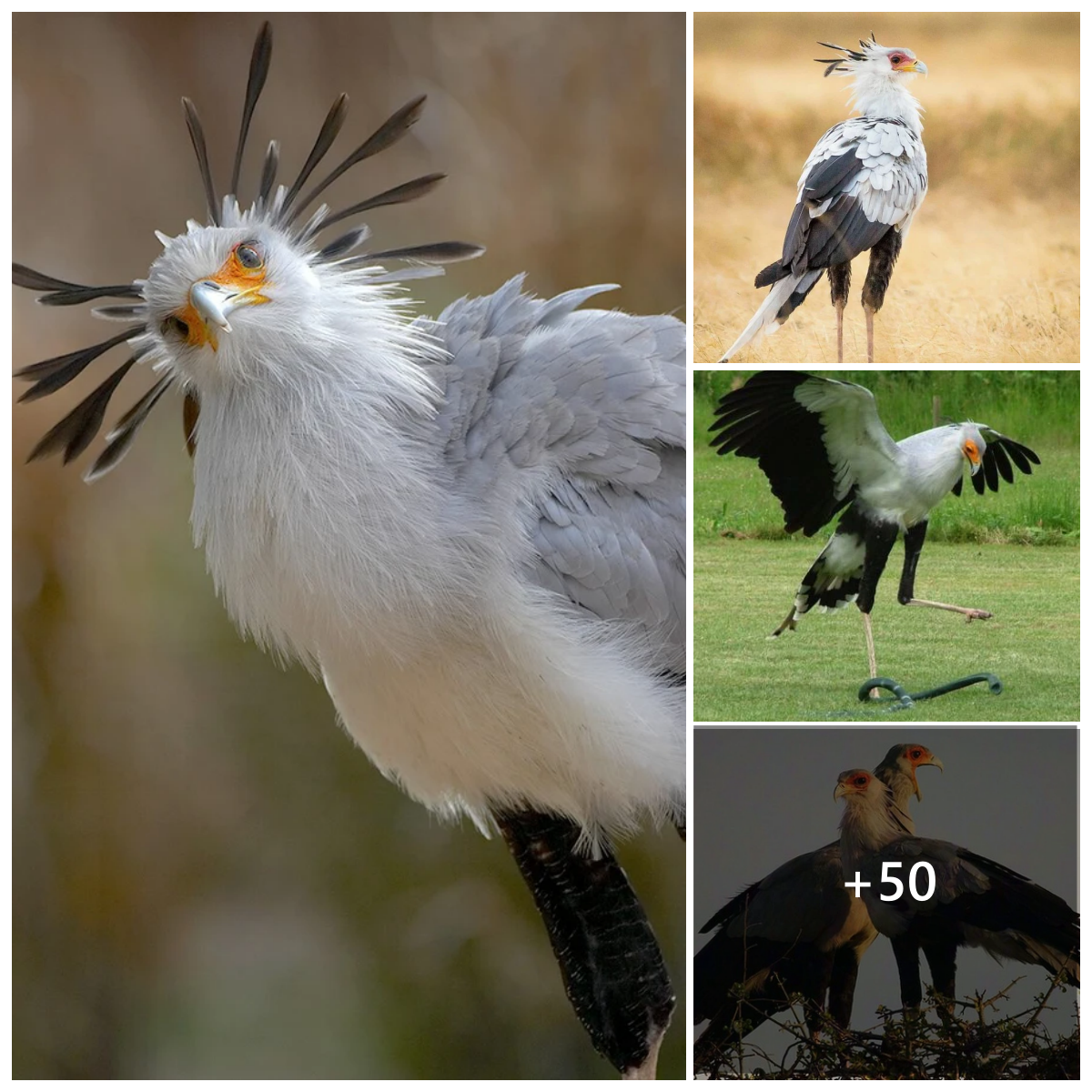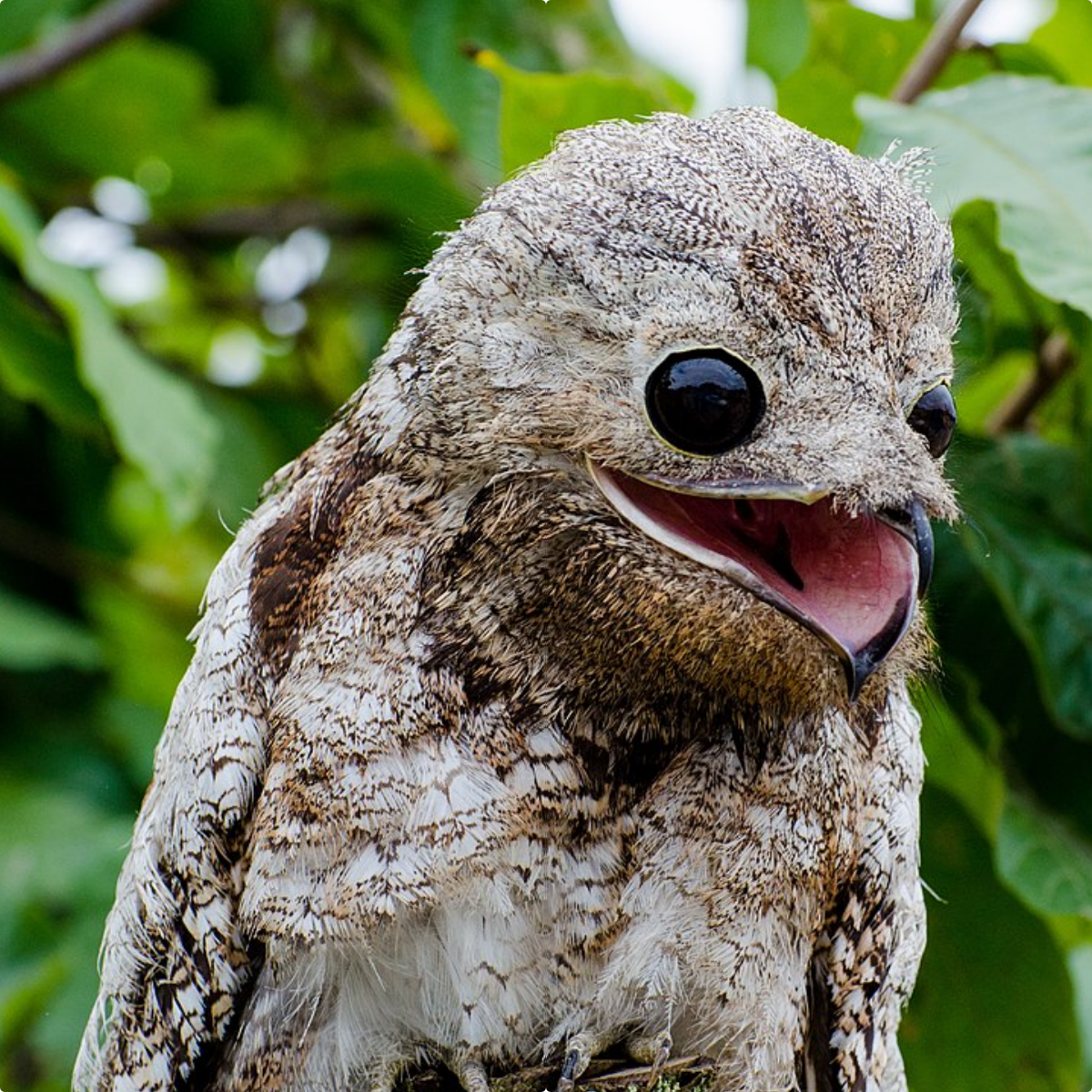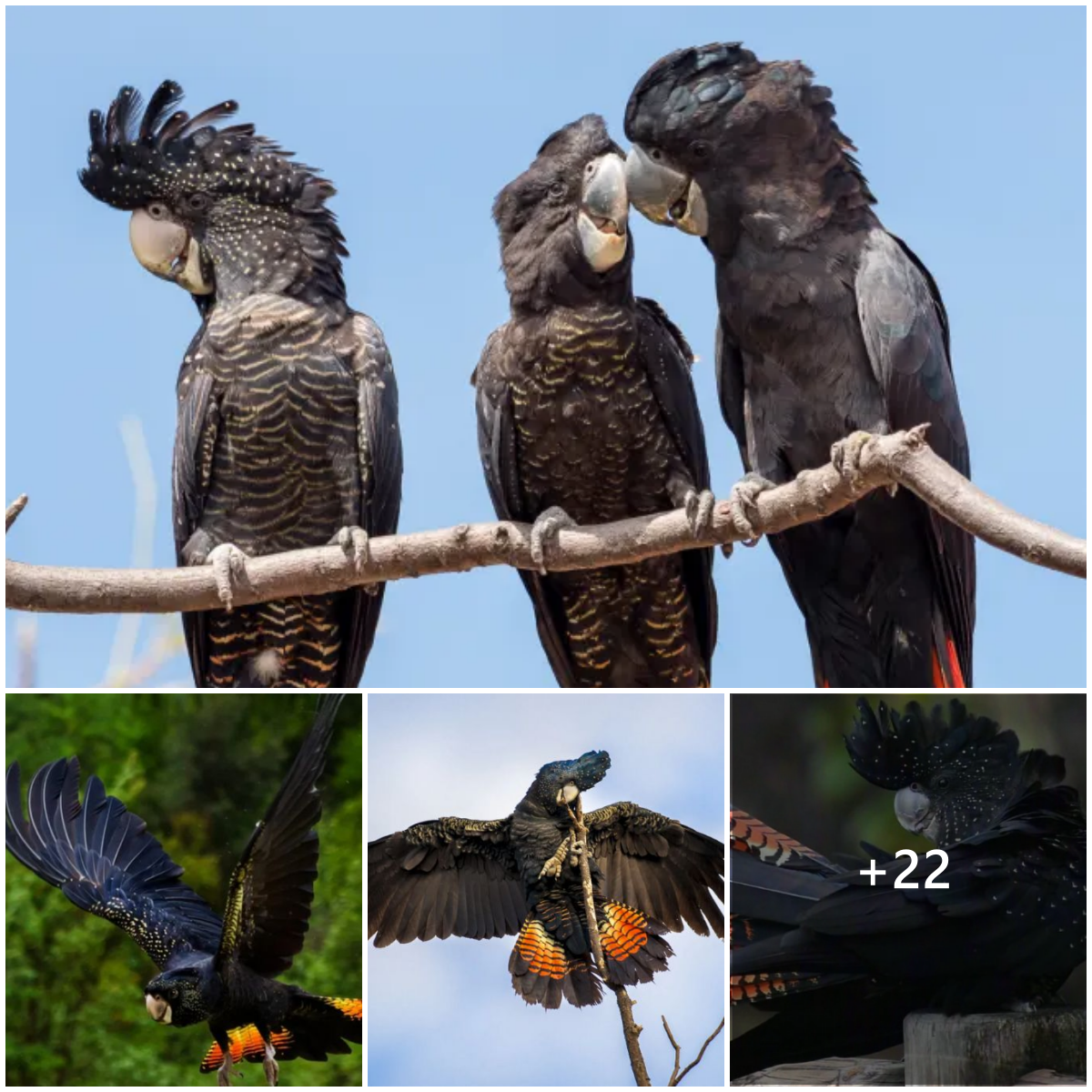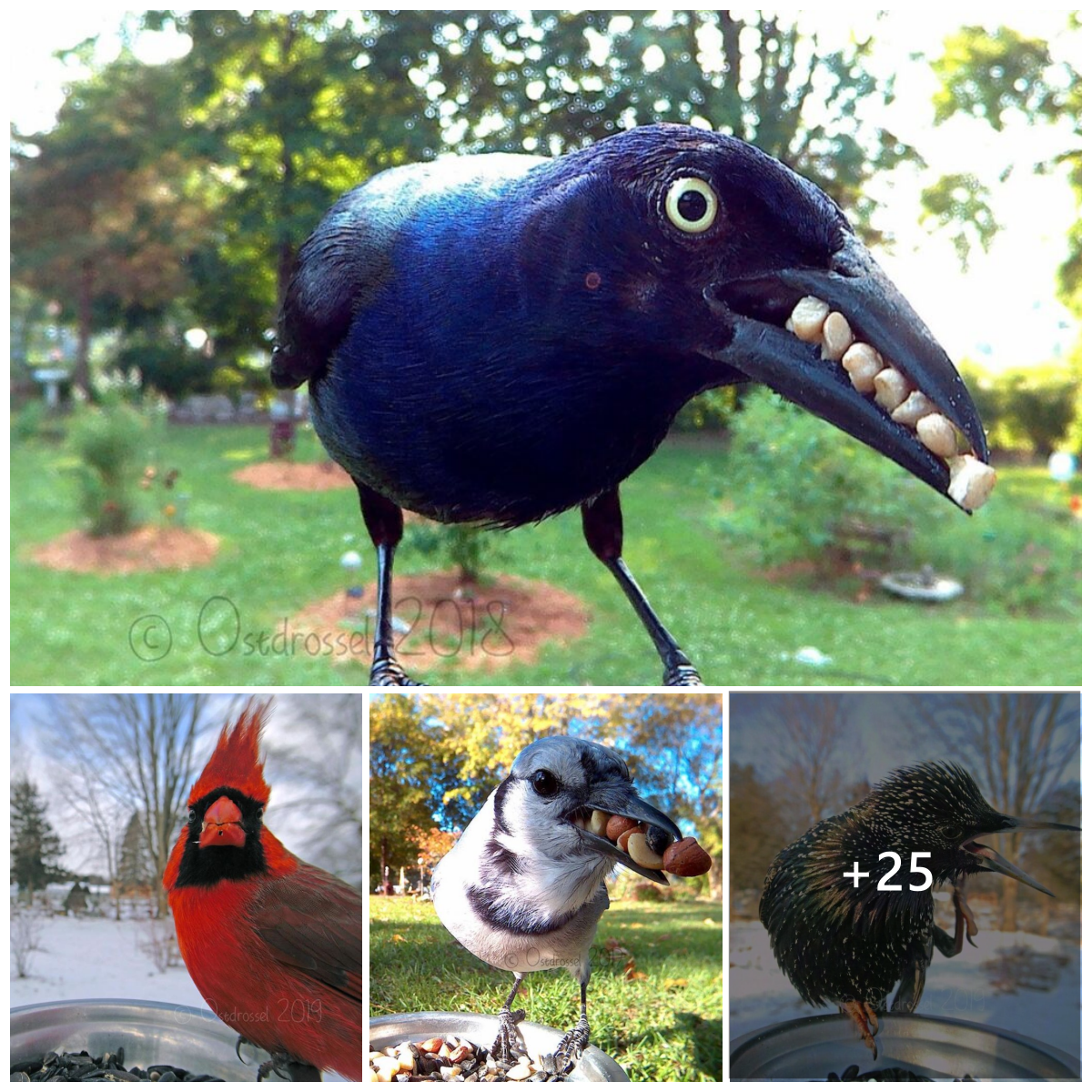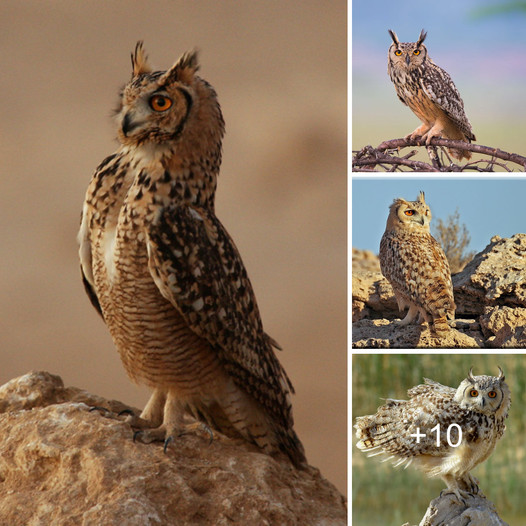Birds are vertebrate animals with warm blood, walking on two legs, beaks, lay eggs, have wings, feathers, and most of them can fly. There are many bird species in the world with unique characteristics. The diversity and richness of creatures on Earth are so vast that even if we spend our whole life studying them, we cannot cover them all. Today, we will introduce to you the largest birds in the world through the following article.
The mute swan is the largest and most beautiful water bird. The mute swan or Cygnus olor is one of seven swan species found worldwide. They are called mute swans because they are usually silent, only hissing or honking when threatened. Adult female mute swans weigh around 9kg, while males weigh between 11kg and 15kg. Mute swans start breeding at around three years old. From mid-March to May, mute swans build a large nest for the female to lay three to seven eggs. The eggs are laid two days apart, and the incubation period lasts for 35 days. During the breeding season, male mute swans fiercely defend their territory and can be aggressive towards intruders, even engaging in fatal fights. They often threaten anyone who comes close to the nest while making warning hisses. Although they can deliver painful blows with their wings, they do not bite. When hatched, cygnets (baby mute swans) are gray and covered in downy feathers, but they quickly replace them with brownish juvenile plumage.
Mute swans are primarily found in Europe. Each swan can measure up to 1.5 meters in length, with a wingspan of up to 2.4 meters. They have an elegant appearance, with their S-shaped neck. Known for their intelligence and territorial nature, mute swans are beloved by many. Small fish, insects, and other aquatic organisms are their main food source. In England, mute swans are considered a domesticated species since the 12th century when they were first introduced and raised by monarchs for lavish feasts. According to bird surveys, the population of mute swans in England has increased by 250% since the 1960s. Biologist Allan Frake of the UK Environment Agency has noted that each mute swan can consume up to 2kg of aquatic vegetation per day, which can be detrimental to one of the rarest mammals in the country, the water vole.

The Andean condor or vultur gryphus is a species of bird belonging to the New World vulture family. This species is distributed in South America in the Andes mountain range, including the Santa Marta mountains. Its range starts in Venezuela and Colombia in the north, where it is extremely rare, and then extends south along the Andes mountains in Ecuador, Peru, and Chile, through Bolivia and western Argentina to Tierra del Fuego. They are among the largest birds in the world, weighing up to 15 kg and reaching heights of 1.2 meters with a massive wingspan of 3 meters, which allows them to have excellent flying ability. Their habitat consists mainly of open grasslands and high mountain areas up to 5,000 meters (16,000 feet) above sea level. They prefer relatively open areas without forests, which allow them to detect carrion from the air, such as Páramo or rocky mountainous regions in general.
They often search for carrion of wild animals and in water like other vulture species for food. Andean condors have a lifespan of about 75 years and slow reproductive rate, which puts them at risk of extinction. For the first time in history, a group of scientists has attached recording devices they call “daily diaries” to 8 Andean condors living in the Patagonia region (mountainous area between Chile and Argentina) to monitor their wing activity during a total of 250 hours of flight. It is notable that these birds only flap their wings for about 1% of this time, mostly during takeoff. One bird even flew for over 5 hours, covering a distance of 160 km without flapping its wings.


One of the largest bird species that must be mentioned is the Albatross, which typically inhabits the Southern Ocean and the North Pacific. They are considered to have the largest wingspan of any bird species. There are 24 different species of Albatross, with the Wandering Albatross being particularly notable – this species has a body length of up to 1.35m and weighs between 5.9 to 12.7kg. The largest wingspan of this bird species has been confirmed to be approximately 3.7m. The name “Wandering Albatross” comes from its physiological characteristics, as this species wanders during its flights and spends a large part of its life flying. These birds silently fly thousands of kilometers over the surface of the water. Therefore, their home is not on land, but in the open ocean and seas. The natural habitat of these “traveling birds” includes the waters near the Antarctic and the coastlines of southern Africa, Australia, and the Americas. Some may be found in the northern hemisphere of the planet, but they are extremely rare.
During the mating process, these birds only lay a single egg. Young Albatrosses can start flying long distances in just one month. White-capped Albatrosses are also good at flying and swimming, but they do not dive. The entire life of these bird species takes place on the water and in the air, except during the breeding season when they are confined to nesting areas. During flight, their wings form a straight line with their bodies, and their two legs are connected and stretched straight back. The Albatross is known as a large and powerful bird. Interestingly, from the ground, even when running, an Albatross cannot take off. To do so, it must find a hill, a rock, or some kind of elevated surface, and launch itself from there, straight into flight. But it can take off from the water without any issues. Remote islands are the ideal location for them to live during the breeding season.


There is another flightless bird from Australia on this list. Their name is Emu, a species of bird belonging to the family Casuariiformes. They are the second largest surviving bird in terms of height, after their African cousin, the ostrich. This species is endemic to Australia, where it is the largest native bird and the only surviving member of the genus Dromaius. Their distribution range covers most of the Australian continent, but subspecies on Tasmania, Kangaroo Island, and King Island have become extinct after European settlement in Australia in 1788. This bird is common enough to be considered a species of least concern by the International Union for Conservation of Nature (IUCN). The Emu is a bird with a soft, brown-feathered head and neck, flightless with long neck and legs, three-toed feet, and can reach up to 1.9 meters in height. Emus can travel long distances and can run at speeds of up to 50 km/h when necessary; they eat various types of vegetation and insects, but have been known to fast for several weeks. They do not drink water regularly, but consume large amounts of water when available. The average body weight ranges from 40 kg to 50 kg.
Breeding occurs in May and June, and mating competition among females is common. Females can mate multiple times and lay multiple clutches of eggs in a season. Males are responsible for incubating the eggs; during this period, they eat and drink very little and experience significant weight loss. Eggs hatch after about eight weeks, and the chicks are cared for by their fathers. They reach maximum size after about six months, but can still stay with their family until the next breeding season. The Emu is an important cultural icon of Australia, appearing on the coat of arms and various coins. This bird is prominent in Aboriginal Australian mythology. This Australian species of ostrich has strong and sturdy legs that allow them to run at speeds of up to 50 km/h – equivalent to the speed of an electric bicycle. Like other ostrich species, they eat fruits, lizards, and insects. Winter is usually the breeding season for the Australian Emu. Their eggs are usually heavy, weighing up to 0.45 kg, and have a dark green color.


The pelican is a large bird belonging to the order Pelecaniformes. There are currently eight surviving species of pelicans, all of which belong to the genus Pelecanus. However, this genus is quite diverse, as fossil evidence indicates that there were over 10 species of Pelecanus in the past. Pelicans have a distinctive pouch attached to the lower part of their beaks. The smallest species of pelican, the Brown pelican, has a wingspan of 1.8 meters, while the largest species, the Dalmatian pelican, has a wingspan of up to 3 meters. The Dalmatian pelican is a giant member of the pelican family. It breeds from southeastern Europe to India and China in marshes and shallow lakes. Its nest is made on a rough pile of vegetation. The Dalmatian pelican is the largest species among pelicans and one of the largest living birds. It measures 160 to 183 cm in length, weighs 9-15 kg, and has a wingspan of 290-351 cm.
With an average weight of about 11.5 kg, it is the heaviest flying bird in the world on average, although ostriches and swans can exceed the Dalmatian pelican in maximum weight. This bird mainly feeds on fish, but sometimes also eats crustaceans and small birds. It is always covered in familiar grayish-white plumage, with a long beak and a distinctive yellowish-red pouch. The breeding season of the Dalmatian pelican starts from late March or April. Due to increasing threats such as drying up of ponds, lakes, and marshes, indiscriminate hunting, water pollution, and climate change, the population of this gregarious bird is shrinking, and it has been listed as a vulnerable species (VU) in the IUCN Red List.


The Southern Cassowary or Double-wattled Cassowary (Casuarius casuarius) is a species of cassowary native to southern New Guinea, northeastern Australia, and the Aru Islands, primarily in lowland areas. When fully grown, the Southern Cassowary stands approximately 1.5-1.8 meters tall, with females being slightly taller at around 2 meters, and weighs about 58.5 kg. They have wings, but are flightless and can only run. When running, they hold their wings up and flap them to maintain balance. They have short but powerful legs, and are good jumpers and swimmers. Their neck is featherless, revealing red and blue fleshy wattles. The large casque on their head is a distinctive feature of this cassowary species, and it is also used to attract attention during mating season. In 2007, the Southern Cassowary was listed in the Guinness Book of World Records as “the world’s most dangerous bird.”
They prefer to live independently, but during the breeding season, they gather in groups. After mating, the female lays eggs and leaves, while the male incubates the eggs for about 50 to 52 days. The cassowary has a long, sharp claw on its inner toe. When faced with danger, they can become aggressive and use their claw to attack. Even within the group, conflicts often occur. Southern Cassowaries are known to damage crops and their colorful fruits can cause harm to humans, and even a single strike can be fatal to dogs, horses, etc. Their long beak is intimidating to look at, and their feet have sharp claws. The middle toe claw can grow up to 125mm. These sharp claws are used by cassowaries to kick and strike at humans and objects. They can sprint at speeds of up to 30 miles per hour. They primarily feed on grass, fungi, insects, and often consume 8-10 large, dark-colored eggs. It would certainly be interesting to ride on the back of a cassowary for a joyride, wouldn’t it? Compared to many other bird species, the Southern Cassowary has an impressive appearance, but it is also a dangerous species that requires caution and respect.


Emperor penguin (scientific name Aptenodytes forsteri) is the largest and heaviest species of penguin among all living penguin species and endemic to the Antarctic continent. Both males and females have similar plumage and size, reaching a height of up to 122 cm and weighing from 22 to 45 kg. Their heads and backs are black, bellies and legs are white, and chests are pale yellow with bright yellow ears. Their bodies are slender and long. Emperor penguins are flightless birds with small, flat wings adapted to their aquatic environment. Their diet consists mainly of fish, but they also occasionally eat crustaceans, cephalopods, mollusks, and krill. While hunting, they can dive underwater for up to 18 minutes and reach depths of up to 535 m. They have several adaptations to cope with these conditions, including an abnormal hemoglobin structure that allows them to function in low oxygen environments, sturdy bones to reduce pressure-related injuries, and the ability to lower their metabolic rate and shut down unnecessary organ functions.
Emperor penguins are famous for their long annual journeys to breed and raise their offspring. They only breed during the winter months in the Antarctic continent, and they have to travel long distances of about 50-120 km (31-75 miles) over the ice to reach their breeding grounds where thousands of individuals gather. The females lay a single egg, and then the males take turns incubating the eggs while the females go out to sea to forage. After hatching, both males and females take turns searching for food in the ocean and caring for their chicks at the breeding grounds. The average lifespan of an Emperor penguin is 20 years, although some individuals can live up to 50 years. Like all other penguin species, Emperor penguins have a streamlined body adapted for swimming, with flat wings and webbed feet. They have a tongue equipped with rear-facing barbs to prevent prey from escaping when caught. Adults have black feathers on the back, head, chin, neck, back of the legs, and tail. The undersides of their wings and bellies are white, with pale yellow on the chest and bright yellow ears.


The South American Rhea, also known as the American Rhea (scientific name: Rhea), is the only species of Rhea found in South America in the same-named family, consisting of 2 species of birds living in South America. The American Rhea is smaller in body size than the African Ostrich but larger than the Emu. Their diet primarily consists of plants and insects. They live in grasslands in Argentina, Brazil, and Bolivia. This species of bird is considered one of the largest birds in the region. Each individual Rhea can weigh from 35 to 40 kg, and they have wings that help them balance their bodies. The South American Rhea is a large flightless bird with brownish-gray feathers, long legs, and a long neck, similar in appearance to the African Ostrich. They can reach up to 1.7 m in height and weigh up to 40 kg. Their wings are large compared to flightless birds and spread wide when running, serving as sails. Unlike most other bird species, the South American Rhea has only 3 toes. The leg bones of their long neck have horizontal plates in front of them.
In March 1837, ornithologist (bird researcher) John Gould declared that Charles Darwin’s South American Rhea was a distinct species from previously described South American Rheas, and the imitated birds on the Galápagos Islands actually represented three separate species, each unique to an island, and furthermore, several different bird species on the islands were all classified as finches. By gradually reintroducing this native species of bird into its natural environment, conservationists hope to maintain the survival of this animal. The South American Rhea is an essential part of the ecosystem in Patagonia. They mainly eat grasses, which helps with seed dispersal and distribution of plant species throughout the region. These “running” birds have large, sturdy legs to withstand attacks from predators. Moreover, female Rheas typically lay 50 eggs at once, and their eggs are also quite large!


The Kori Bustard (scientific name: Ardeotis kori) is a bird species in the Bustard family. Kori Bustards are found throughout southern Africa, except in areas with dense vegetation. They are common in Botswana, Namibia, southern Angola, localities in Zimbabwe, southern Zambia, southern Mozambique, and eastern South Africa. There is a disjointed geographic population in the deserts and savannas of northwest Africa, ranging from southern Sudan, northern Somalia, Ethiopia, across Kenya (except for coastal areas), Tanzania, and Uganda. Male bustards measure 120 to 150 cm in length, stand 71-120 cm tall, and have a wingspan of approximately 230 to 275 cm. On average, males weigh about 10.9 to 16 kg, with an average of 13.5 kg, but some individuals can weigh as much as 20 kg.
Female bustards weigh on average 4.8 to 6.1 kg, measure 80 to 120 cm in length, and are usually less than 60 cm tall with a wingspan of less than 220 cm. Body size tends to be larger in populations in southern Africa, and body mass may vary depending on rainfall conditions. The Kori Bustard is one of the heaviest flying birds in the world. Despite its “wrestler-like” body, this bird is still able to fly gracefully through the air. Kori Bustards are omnivorous, feeding on a variety of items, including grass, fruits, seeds, roots, flowers, as well as insects such as grasshoppers, beetles, and caterpillars. This bird species ranks 5th on the list of the world’s largest birds.


The ostrich is considered the largest living bird and is raised worldwide. Its scientific name is derived from the Greek word meaning “camel bird”. The second part of its scientific name – camelus – is associated with the harsh natural environment in which it lives. The African ostrich (Struthio camelus) is a running bird species native to Africa. It is the sole surviving species of the family Struthionidae and the genus Struthio. They are distinct in appearance with a long neck, long legs, and the ability to run at speeds of up to 65 km/h (40 mph). African ostriches weigh from 90 to 130 kg (200 to 290 pounds), with some males known to weigh up to 155 kg (340 pounds). Adult male ostriches have predominantly black feathers with a few white spots on their wings and tail. Female and juvenile ostriches have light brownish-gray feathers with some white spots. Adult male ostriches use their small wings, which have undergone degeneration, to dance and court their mates and also to provide shade for their offspring.
With thick and black eyelashes, ostriches have the largest eyes among living terrestrial animals. At adulthood (2-4 years old), male ostriches can reach a height of 1.8-2.7 m (5.9-8.9 ft) and female ostriches can reach a height of 1.7-2 m (5.6-6.6 ft). In the first year, ostrich chicks grow about 25 cm (9.8 in) per month. At one year old, ostriches weigh about 45 kg (99 pounds). African ostriches live in groups of 5-50 individuals and migrate with other herbivorous animals such as wildebeests and gazelles. They mainly feed on seeds and grasses, occasionally consuming small animals such as insects. As they do not have teeth, they swallow stones to aid in the grinding of food in their gizzards. They can go for long periods without water, relying on the moisture from the plants they consume. However, they do enjoy water and often take baths. With keen hearing and sight, they can detect predators such as lions from a distance.


In nature, there are many different species of animals, big and small. The more we read and observe, the more knowledge we gain, right? Among the largest birds in the world, have you heard of any of the species mentioned in the list above?
